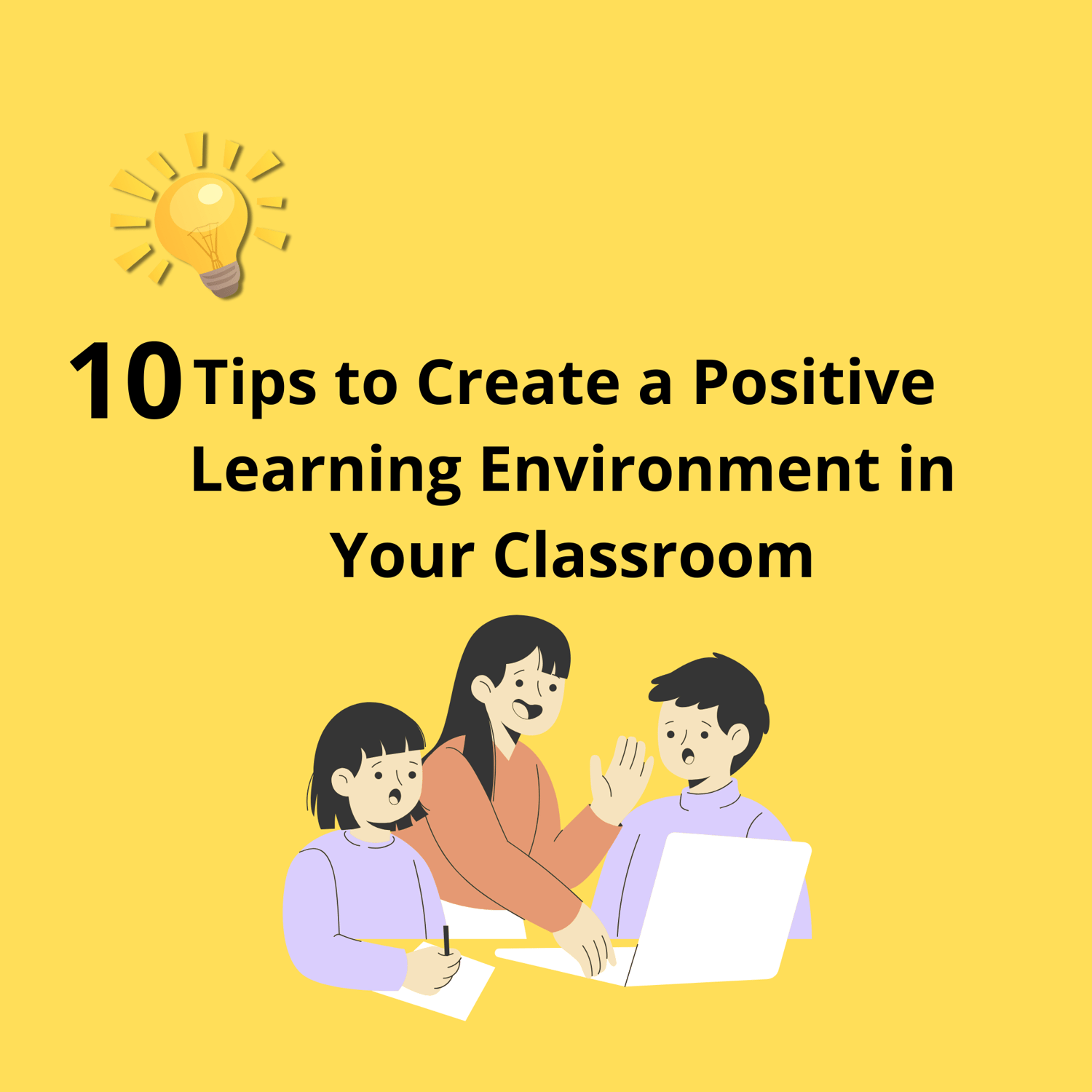10 Tips to Create a Positive Learning Environment in Your Classroom
Creating a positive learning environment is crucial for student engagement and academic success. When students feel safe, supported, and motivated in their classroom, they are more likely to thrive and excel. As educators, it is our responsibility to foster a positive atmosphere that promotes learning, collaboration, and personal growth. In this blog post, we will share 10 effective tips to help you create a positive learning environment in your classroom.
1. Establish Clear Expectations:
Set clear and reasonable expectations for behavior, participation, and academic performance from the beginning. Communicate these expectations to your students and consistently reinforce them. This will create a sense of structure and predictability, allowing students to feel secure in their learning environment.
2. Encourage Positive Relationships:
Promote positive interactions among students by encouraging teamwork, collaboration, and empathy. Create opportunities for students to work together, engage in group discussions, and practice active listening. Encourage kindness and respect towards one another, fostering a supportive and inclusive community.
3. Create a Welcoming Physical Space:
The physical layout of your classroom can greatly impact the learning environment. Arrange desks or tables in a way that encourages interaction and easy movement. Incorporate colorful and engaging displays, inspirational quotes, and student work to make the space inviting and inspiring.
Cheerful Education: Preschool and Kindergarten- Worksheets Printable-Homeschool Learning
Cheerful Education: Preschool and Kindergarten- Worksheets Printable-Homeschool Learning
4. Celebrate Diversity:
Embrace and celebrate the diversity in your classroom. Teach your students about different cultures, traditions, and perspectives. Encourage them to share their unique experiences and learn from one another. This fosters a sense of belonging and promotes a respectful and inclusive environment.
5. Provide Individualized Support:
Recognize that each student has unique learning needs and styles. Offer individualized support to help every student succeed. Provide extra assistance, offer additional resources, and adapt your teaching methods to cater to different learning preferences.
6. Incorporate Student Voice and Choice:
Empower your students by giving them a voice in their learning. Allow them to make choices regarding topics, projects, or assignments. Encourage them to share their opinions and ideas. When students feel valued and heard, they become more engaged and motivated to learn.
7. Offer Constructive Feedback:
Provide timely and constructive feedback to help students understand their strengths and areas for improvement. Focus on their efforts and progress rather than just grades. Encourage a growth mindset, emphasizing that mistakes are opportunities for learning and growth.
8. Infuse Creativity and Fun:
Integrate creativity and fun into your lessons to make learning enjoyable. Incorporate hands-on activities, games, and interactive technology. Create a positive association with learning, making it an exciting and engaging experience for your students.
9. Foster a Growth Mindset:
Teach your students about the power of a growth mindset. Encourage them to embrace challenges, persist in the face of setbacks, and believe in their ability to improve. Create a classroom culture that celebrates effort, resilience, and a love for learning.
10. Build Teacher-Student Relationships:
Develop meaningful connections with your students. Show genuine interest in their lives, listen attentively, and provide emotional support when needed. Building strong teacher-student relationships creates a sense of trust and respect, leading to a positive learning environment.
Conclusion:
By implementing these 10 tips, you can create a positive learning environment in your classroom that fosters growth, engagement, and success. Remember, a positive classroom atmosphere not only enhances academic achievement but also nurtures the overall well-being of your students. Embrace these strategies, and watch your students flourish in a supportive and empowering educational environment.
Cheerful Education: Preschool and Kindergarten- Worksheets Printable-Homeschool Learning








